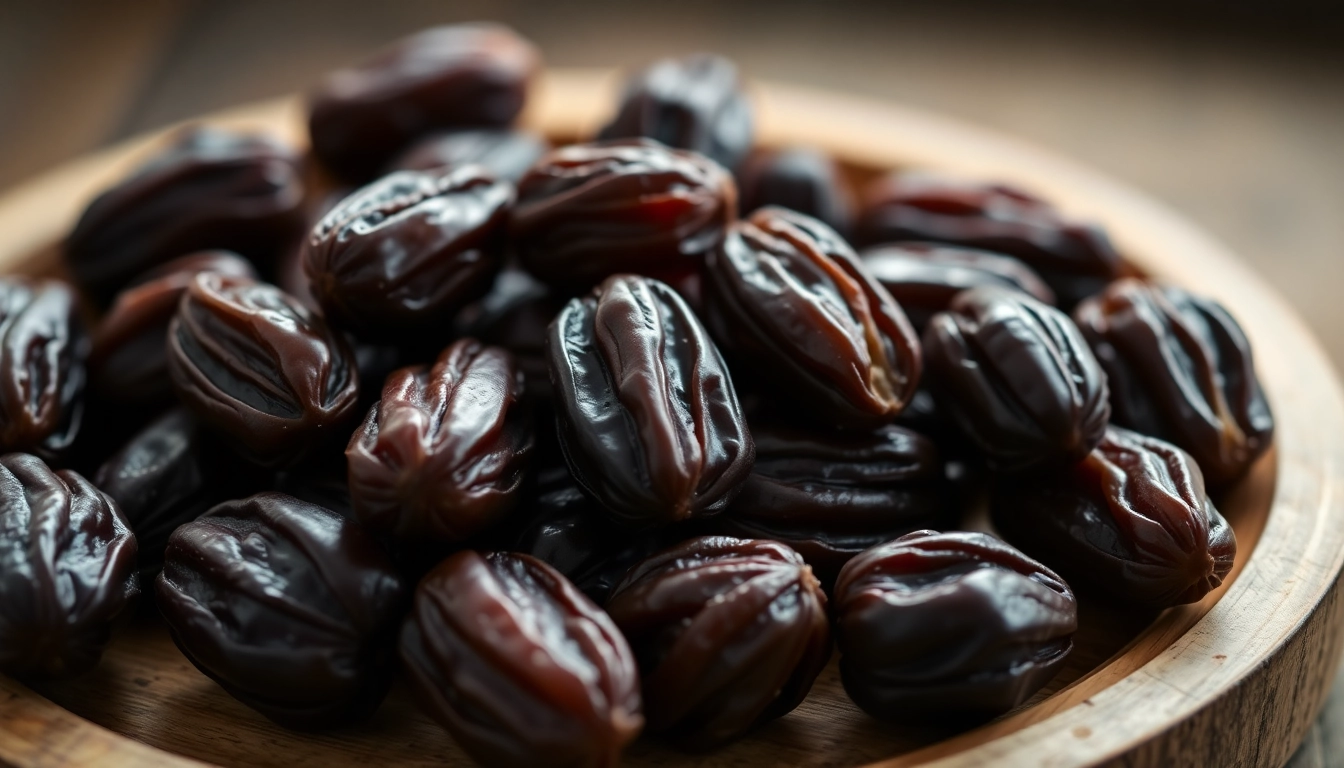Introduction to Cinnamon Bark
Cinnamon bark, a beloved spice cherished in kitchens and traditional medicine alike, offers a rich tapestry of flavor, potential health benefits, and culinary versatility. This aromatic spice is derived from the inner bark of the cinnamon tree, revered for its distinctive sweet and woody flavor. Known scientifically as Cinnamomum verum or “true cinnamon,” it has a storied history and various applications that set it apart from its counterpart, Cassia cinnamon. Whether sprinkled on morning oatmeal or brewed into herbal teas, Cinnamon Bark invokes warmth and nostalgia, inviting exploration into its world of benefits and uses.
What is Cinnamon Bark?
Cinnamon bark is the inner layer of the bark of the cinnamon tree, which is primarily cultivated in tropical regions, such as Sri Lanka, India, and Indonesia. It comes in various forms, including whole rolls known as quills, ground powder, or extracted oil. This spice is revered not only for its unique taste but also for its potential therapeutic attributes. The key component responsible for cinnamon’s distinct flavor and aroma is an essential oil called cinnamaldehyde, which may offer several health benefits due to its anti-inflammatory and antioxidant properties.
History and Origin of Cinnamon Bark
The use of cinnamon dates back thousands of years, with ancient civilizations praising its value. Historically, it was regarded as a luxury item and was highly sought after, often used in religious rituals and medicinal practices. Egyptian tombs contain traces of cinnamon, evidencing its role in embalming. In the Roman Empire, it was prized as a flavoring and preservative. With trade routes weaving through continents, cinnamon became a symbol of wealth and status, captivating explorers and merchants. Its historical narrative underscores its significance in global cultures, where the mere mention of the spice elicits thoughts of exotic cuisines and time-honored remedies.
Types of Cinnamon Bark
Cinnamon is mainly categorized into two primary types: Ceylon cinnamon and Cassia cinnamon. Ceylon cinnamon, also known as “true cinnamon,” is characterized by its softer texture, complex flavor profile, and lower coumarin content, which makes it a safer choice for consumption. On the other hand, Cassia cinnamon, more prevalent in commercial products, has a stronger flavor and higher coumarin levels, which can be harmful in large quantities. When choosing cinnamon, it’s crucial to understand these differences to select the type that best suits your needs for flavor and health.
Health Benefits of Cinnamon Bark
The health benefits of cinnamon bark have been the subject of extensive research. The spice is rich in antioxidants, compounds that combat oxidative stress in the body. This section explores the health advantages linked to cinnamon consumption, focusing on its antioxidant properties, role in blood sugar regulation, and anti-inflammatory effects.
Cinnamon Bark and Antioxidants
Cinnamon bark is renowned for its high antioxidant content, which helps neutralize free radicals in the body—unstable molecules that can cause cellular damage and increase the risk of multiple diseases. The presence of polyphenols, flavonoids, and other phytochemicals in cinnamon contributes to its antioxidant capacity. Studies have found that regular consumption of cinnamon can enhance the body’s antioxidant defense system, offering protective effects against chronic diseases such as heart disease, diabetes, and certain cancers. Consuming cinnamon can thus not only add flavor to your meals but also fortify your body’s ability to ward off oxidative stress.
Cinnamon Bark’s Role in Blood Sugar Regulation
Research indicates that cinnamon bark can play a critical role in managing blood sugar levels. Cinnamon can improve insulin sensitivity, allowing cells in the body to use blood sugar more effectively. This is especially crucial for individuals with insulin resistance or Type 2 diabetes. Some studies have shown that even small amounts of cinnamon can lower blood sugar levels and improve glycemic control. By enhancing insulin action and lowering blood sugar, cinnamon not only adds flavor to foods but may also become an integral part of dietary strategies for managing glucose levels.
Potential Anti-Inflammatory Properties
Cinnamon bark possesses anti-inflammatory properties, which may contribute to easing conditions associated with chronic inflammation. The bioactive compounds in cinnamon, especially cinnamaldehyde, have been shown to inhibit certain markers of inflammation in the body. Chronic inflammation is linked to various health conditions, including heart disease, cancer, and neurodegenerative diseases. Incorporating cinnamon into your diet may help reduce inflammation and promote overall health, making it a valuable addition to a balanced lifestyle.
Culinary Uses of Cinnamon Bark
Cinnamon bark is beloved in culinary traditions worldwide for its warm, sweet flavor. Its versatility makes it an ideal spice for both sweet and savory dishes. This section delves into how to incorporate cinnamon into everyday cooking, its flavor pairings, and recipes that showcase its unique attributes.
Incorporating Cinnamon Bark in Everyday Cooking
Integrating cinnamon bark into daily meals can be simple and rewarding. It can be used in various forms, such as whole quills, ground powder, or infused in liquids. For example, whole quills can be added to simmering soups and stews for depth of flavor. Ground cinnamon can be sprinkled on oatmeal, yogurt, or baked goods for a warm touch. Additionally, cinnamon pairs excellently with fruits, enhancing their natural sweetness while contributing its health benefits. Its aromatic quality can elevate both breakfast and dinner, showcasing its culinary diversity.
Flavor Pairings for Cinnamon Bark
The flavor of cinnamon bark harmonizes beautifully with a variety of ingredients. Sweet fruits such as apples, pears, and bananas form classic combinations with cinnamon, often used in pies and crumbles. In savory dishes, cinnamon complements meats, particularly lamb and chicken, providing warmth and complexity. Other notable pairings include nuts, ginger, honey, and vanilla, creating delightful blends in desserts and baked goods. Exploring flavor combinations with cinnamon can lead to delightful culinary creations that will impress family and friends.
Recipes Featuring Cinnamon Bark
To truly appreciate the qualities of cinnamon bark, here are a few delightful recipes that highlight its versatility:
- Cinnamon-Spiced Apple Crumble: This dish combines sliced apples with a sprinkle of cinnamon, oats, and brown sugar, baked until bubbly and crisp. A delightful dessert perfect for any season!
- Cinnamon-Infused Quinoa: Cook quinoa in water or broth with a couple of cinnamon quills added. This aromatic base can serve as a perfect side dish or salad foundation.
- Cinnamon-Orange Glazed Chicken: A mixture of orange juice, honey, and ground cinnamon creates a rich marinade for chicken, infusing it with flavor and zest.
- Cinnamon Hot Chocolate: Enhance a classic hot chocolate by adding a stick of cinnamon while warming milk or water, allowing the flavors to meld for a comforting treat.
How to Choose and Store Cinnamon Bark
Choosing and maintaining the integrity of cinnamon bark is vital for maximizing its flavor and benefits. This section provides essential tips on buying, storing, and identifying authentic cinnamon bark.
Buying Tips: What to Look For
When purchasing cinnamon bark, be discerning to ensure quality. Look for Ceylon cinnamon when possible, which has a light brown color and a soft, flaky texture. High-quality cinnamon quills should have a distinct aroma and should not easily break apart. Ground cinnamon should have a fresh, spicy scent and should be stored in airtight containers to maintain its potency. The label should identify the species to verify authenticity—especially since Cassia is more common and often mislabeled.
Storing Cinnamon Bark for Maximum Freshness
To preserve the freshness of cinnamon bark, store it in a cool, dark place away from direct sunlight, humidity, and heat. Whole quills can maintain their flavor and aroma for longer than ground cinnamon, so buying it in whole form is often preferable. Use airtight containers to shield the spice from air exposure, and avoid excessive handling to maintain its quality. Regularly check for freshness by sniffing—if the aroma has diminished, it may be time to replace.
Identifying Authentic Cinnamon Bark
Distinguishing between Ceylon and Cassia cinnamon can be crucial. Ceylon cinnamon has multiple thin layers, making it easy to roll into quills, while Cassia has a singular, dense bark roll. A simple taste test can also reveal differences: Ceylon has a sweeter and more complex flavor, whereas Cassia is sharper and more pungent. Conducting research on brands and purchasing from reputable sources can aid in ensuring authenticity.
Conclusion: The Versatility of Cinnamon Bark
Cinnamon bark, with its unique flavor and numerous health benefits, is an essential ingredient that deserves a prominent place in every kitchen. The exploration of its rich history, culinary uses, and health advantages is just the beginning. This versatile spice offers ample opportunities for culinary exploration and health enhancement.
Embracing Cinnamon Bark in Daily Life
By incorporating cinnamon bark into daily culinary practices and health routines, individuals can create delightful meals while reaping the spice’s numerous benefits. From flavoring coffee and tea to enhancing savory dishes and desserts, the possibilities are virtually endless. Cinnamon’s role as both a comforting ingredient and a potential health ally makes it a valuable addition to a balanced lifestyle.
Future Trends in Cinnamon Bark Usage
As the culinary world evolves, so too does the appreciation for spices like cinnamon. Trends may lean towards innovative fusion cuisines that incorporate cinnamon in unexpected ways, such as in savory dishes or craft beverages. Ingredient transparency and authenticity are becoming increasingly important, leading consumers to seek out genuinely sourced cinnamon varieties. The future likely holds exciting possibilities for cinnamon bark to flourish within food, wellness, and holistic spaces.
Final Thoughts on Cinnamon Bark Benefits
In conclusion, cinnamon bark’s adaptability in the kitchen and potential health benefits make it a staple worth embracing. With its rich background and myriad applications, cinnamon bark not only enhances the taste of dishes but may also contribute positively to overall health. Individuals are encouraged to experiment with this spice, discovering the depths of flavor and wellness it can offer. As we continue to uncover the benefits of natural ingredients, cinnamon bark secures its place not just as a spice but as a vital component of health and flavor enhancement.



